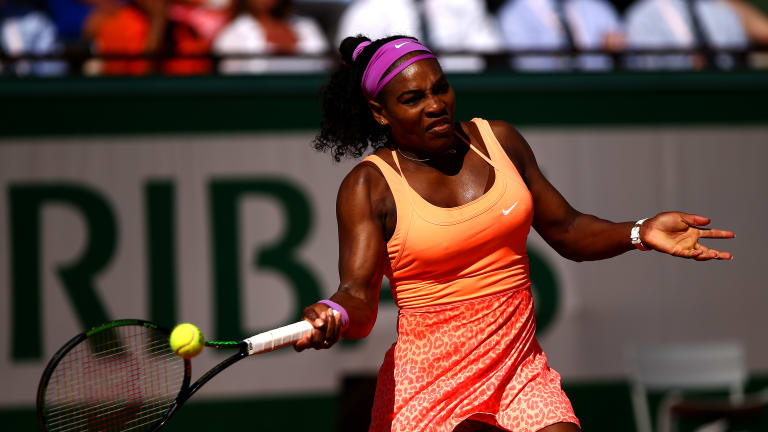Williams has recently spoken openly about other medical issues she has experienced, including surgery for childbirth complications in an interview with *Vogue* magazine. Williams also mentioned in the interview that she has used blood thinners daily because of her foot injury complications in 2010. While these are not considered performance-enhancing or banned under anti-doping rules, they are not recommended for use with corticosteroids, which reduce their effects.
Either way, statements by athletes are not typically used for assessing a TUE, said Miller. "If an athlete says, 'I'm sick,' that isn't a factor that will go towards the documentation," he noted.
The way TUEs are granted in tennis is sound, Miller says.
"I actually think the TUE system is very robust. It has a number of fail-safes," he said. "That's not to say that it isn't theoretically possible for someone to circumvent these rules, but they are robust."
The TUE granting process requires doctors to submit applications on behalf of the athletes they are treating, along with supporting documentation that justifies the TUE application. That is then reviewed by an independent panel of doctors who do not know the identity of the athlete, and decide whether to grant or deny the application. The decision is then entered into the WADA database, with WADA having the ability to reverse the decision.
WADA has reversed a TUE given by the ITF to Bethanie Mattek-Sands in 2013 and 2014, and Miller has previously stated that this has not been done on any other occasion.
Indeed, according to Miller, the TUEs released by hackers showed that applications for tennis players were being granted properly.
"I went through all of the TUEs that were leaked, and there was nothing that suggested the system had been circumvented," said Miller. "There were permissions to use substances that were commonly applied for, common medical conditions.
"Athletes are just members of the public to the extent they get common conditions [and] need a medication to return them to a normal state of health. That's what the TUE system is for. It doesn't give them performance enhancement, it's there to return them to a state of normal health."
But this line between normal health and performance enhancement has become increasingly blurred. The TUEs released in 2016 also included those of British cyclists Chris Froome and Bradley Wiggins. It was confirmed that Froome had received a TUE for prednisolone during 2014, described as being for a chest infection, while Wiggins received three in 2011, 2012 and 2013 for triamcinolone, a slightly more powerful corticosteroid. Subsequently, the *Daily Mail* revealed that Wiggins got a package before a 2011 race, allegedly also containing triamcolone, but which Wiggins's Team Sky said was the decongestant Fluimucil, which Wiggins had taken for pollen allergies.
It eventually prompted a British parliamentary inquiry, which concluded a few months ago that Wiggins injected triamcinolone not for "medical need" but to "improve his power to weigh ratio." This led the committee to say that Team Sky had crossed an "ethical line," and showed cycling's TUE system was "open to abuse." Wiggins and Team Sky have denied any improper use.
While the performance effects of corticosteroids are still more anecdotal than established, cyclist David Millar has admitted to taking them and said they can have a noticeable effect on an athlete's physique in three days."It's catabolic so it's eating into you," he told *The Guardian*.
These cases and others have brought renewed attention to potential problems with TUEs. Asked if such awareness would have any effect on the way TUE applications are assessed going forward, Miller said, "Each case has to stand on its own merits. And in the same way, the independent TUE committee for the tennis anti-doping program would have no knowledge of any other TUEs in any other sport.
"They should and they do, as far as I'm concerned, make a decision about each TUE based, solely, on the information for the TUE. We furnish them with other TUEs [anonymous] for the player concerned."
The broader concerns expressed by the British parliamentary committee are not part of the decision making, Miller added.
"I'm not sure if there's enough information on a TUE application to make a judgment on a set of ethical standards," he said. "Those aren't the criteria by which they are assessed—they are assessed by a set of rules."
McLaren agreed that the TUE system is not equipped to make ethical assessments, but said that any lessons from previous cases should be taken into account.
"Yeah, absolutely. We all learn," he said. "They should go back and say did that happen, and what do we do to make sure... that it doesn't happen again. And [they] should be required to do so by WADA, but WADA these days has got so much on its regulatory plate. TUEs are a small part of a more complex anti-doping set of issues."
But hacks are also not the way to bring such issues to light, he added.
"The foundation is built on illegal activity," said McLaren. "I'm quite suspicious when I see hacking... I wonder, what did they also see and not reveal. It has a context.
''I suspect that in all these cases, there is a lot more background than is in the public domain. I know that from my own work. I was amazed at some of the things we uncovered in Major League Baseball, in the TUE area and elsewhere. Now they've changed a lot today, to their credit. You need [to] have an independent audit from time to time. Not to check the athletes necessarily, but to check the processes."


